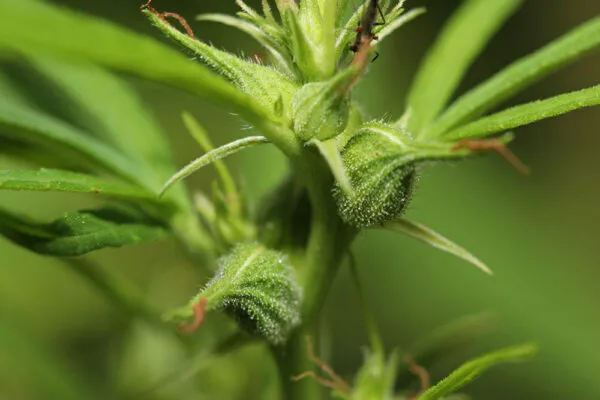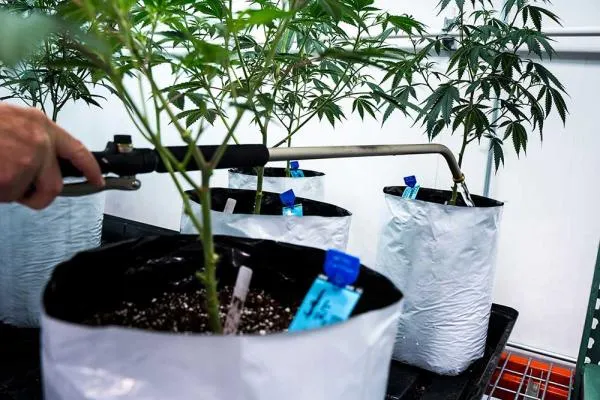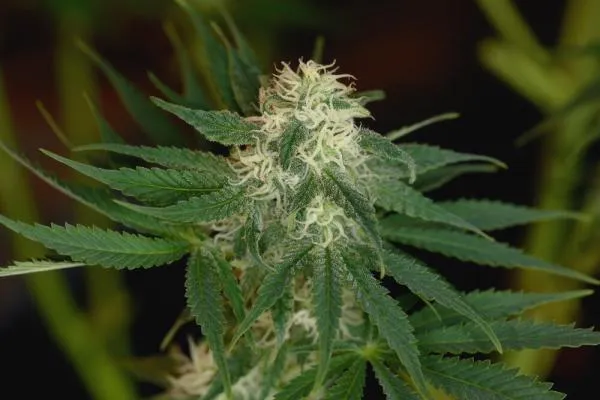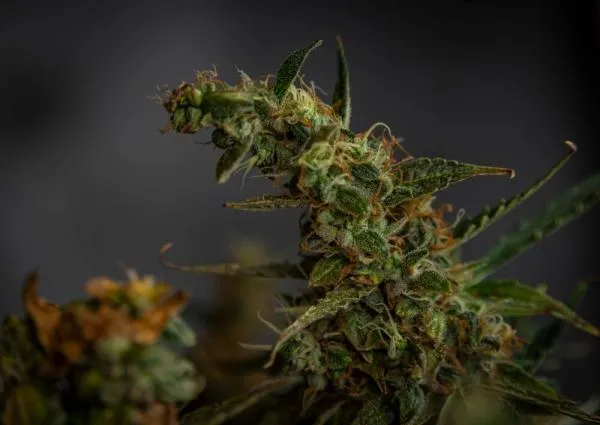Sexing a marijuana plant is simply identifying whether it is male or female. It is very important to be able to spot the early signs of male and female plants before you start growing cannabis. This is because it is only the female plants that produce bud, whereas male cannabis plants produce only pollen and are really only used for breeding purposes.
It is for this exact reason that learning how to spot the early signs of male plants is of vital importance to anyone growing with the intention of producing smokable bud.
Why is it so important to recognise the early signs of male plants?
As mentioned, male cannabis plants only produce pollen sacks and no bud at all. Female cannabis plants are the sole producers of the flower that we use to smoke, therefore ideally we only want females in our crop.
You may be asking yourself, what the worry is of growing male and female cannabis plants?
Put simply when male cannabis plants come into maturity the small sacks that develop on the plant are filled to the brim with pollen and ready to burst at any moment. Once these sacks burst, the pollen contained within them will spray out in every direction floating through the air with the sole purpose of finding a female flower to pollinate.
Once a female flower is pollinated, the plant will divert most of its energy into creating seeds as oppose to producing more bud. The resulting crop will be bud filled with lots of cannabis seeds, the bud will be almost unusable and it will lack the potency, taste and smell that you want from your weed.
To avoid this happening one of the most important skills that any new grower can learn is sexing marijuana plants and spotting the early signs of male plants before flowering has begun.
#1 Recognising the early signs of male plants from preflowers
It’s very easy to identify plant gender once plants have matured and have started to show their reproductive organs. But truthfully, waiting until this point is risky. If the males and females are in the same room, the males could pollinate an entire crop at any moment, and even moving them could cause those pollen sacs to split and fertilize any females nearby. Instead, growers are better off looking for signs of sex before the plants begin flowering.
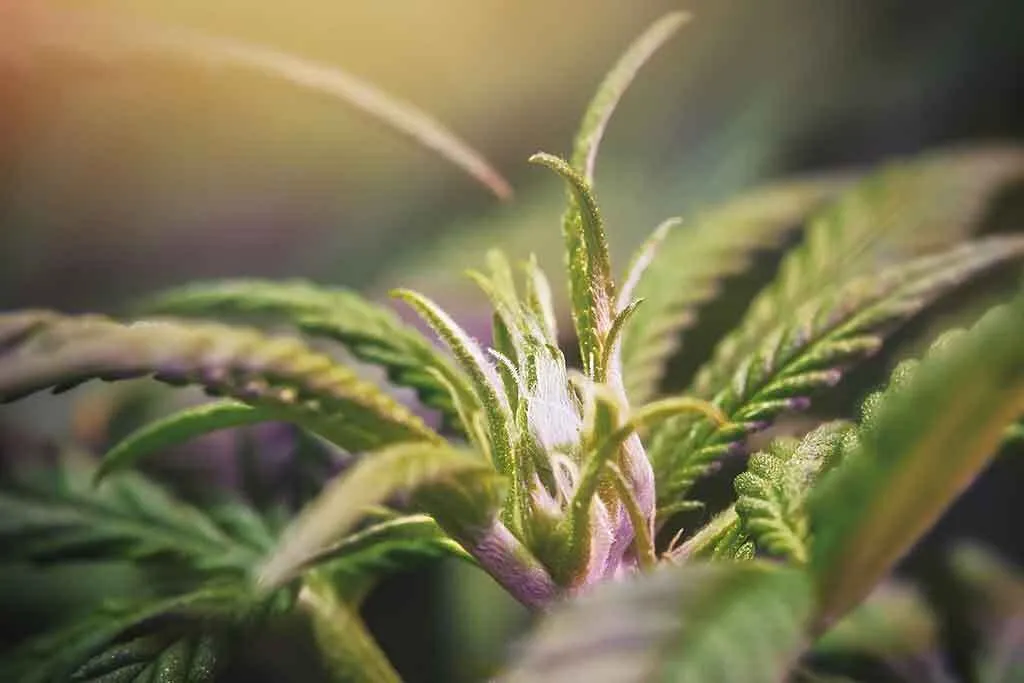
One advantage growers have to spotting the early signs of male plants is that they mature about two weeks earlier than females, regardless of whether they’re grown indoors or out. Around two weeks before they fully mature, male plants will grow what are known as “false buds”, sacs that resemble buds, but are actually sacs of little, white flowers (image above) which is where the pollen sacks will eventually sprout from. Female cannabis plants do not have these little white flowers, so you can assume that any plant that does is a male.
While male marijuana plants have sacs, or false buds, female plants have what many refer to as “white hairs”. These hairs are actually pistils, and they’re quite sticky so that they can catch the pollen the male plants release. Spotting these white pistols on a plant will confirm that this is a female plant.
#2 Sexing marijuana plants by cloning
As we have mentioned you can get a Trying to identify a plant’s sex by height and volume alone is not fail-proof, but there is a way to determine a plant’s gender before it matures that works every single time – cloning.
Cloning is a simple process of taking a cutting from a plant and placing it in a growing medium so that a whole new plant grows. Because the new plant is a clone, it will be identical to the plant it was taken from, including its gender.
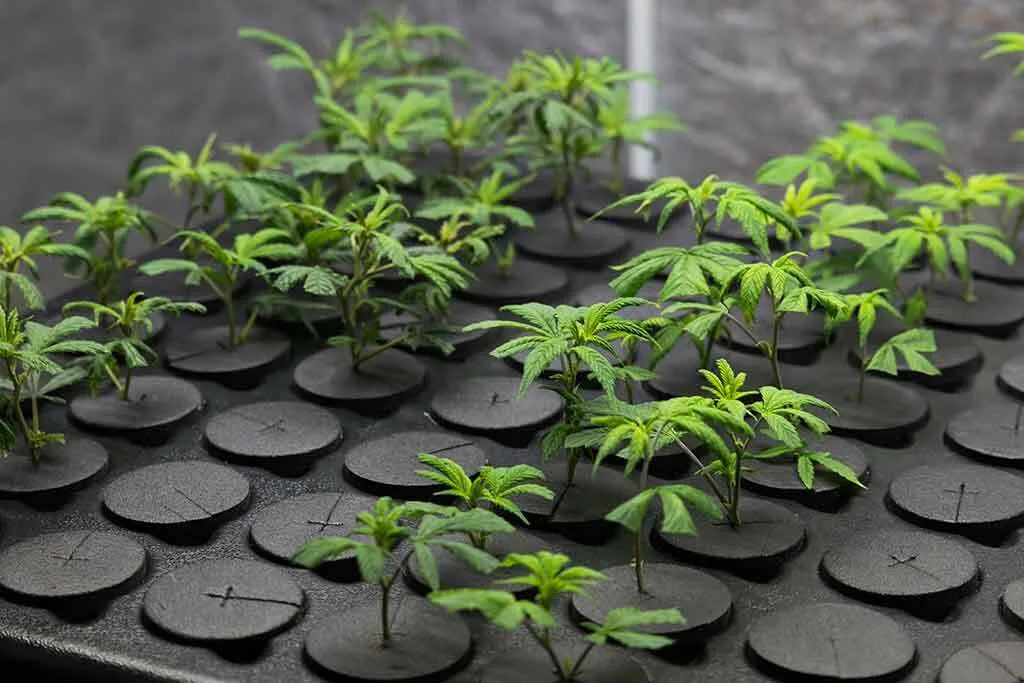
Cloning plants to determine gender is fairly straightforward when there’s only one plant in question, but when there’s an entire crop it can become a bit more complicated. It’s important to identify which clones came from which plants, so growers know which plants are male and need to be removed from the female plants.
Of course, it does no good to simply clone plants and have them grow at the same rate, as they will show signs of their sex at the same time, or even a bit later, than the original plants. To expedite the process, growers must force the clones into the flowering stage by using a light cycle of 12 hours of light followed by 12 hours of complete darkness. Because sexing clones depends on this light cycle, it cannot be done with auto-flowering plants.
#3 Cannabis sexing according to height
Male plants grown outdoors will exhibit different growth signs than their female counterparts, and this can be a good way to identify males and females. The vegetative stage is the first stage of growth for marijuana plants. This is the time when they get bigger and rounder, and are simply focused on growth. While their reproductive organs won’t yet be present, growers can keep a keen eye out for growth patterns that could be an indication of sex.
During this time, females are known to have more complex branching systems, making them seem rather “filled out”, and widening as the branches continue to grow. Male plants on the other hand, are spindlier and typically focus on growing taller rather than wider. Male plants are often not as filled out, with fewer branches and fewer leaves on them.
These signs are more prominent when cannabis plants are grown outdoors and are no indication that the plant needs to be removed from the crop, but they can give growers a good idea of what plants to keep a close eye on.
Male cannabis plants normally experience a sudden growth spurt as they approach the end of the vegetative stage, this results in them growing significantly taller than female plants. This extra height isn't just chance, its by design and its because of this that when the pollen sacs break open, the pollen can scatter further a field and onto any of the shorter surrounding female cannabis plants.
Assessing the height of your cannabis plants as they come to the end of the vegetative stage therefore is one of the best ways to determine the sex of marijuana plants before they actually flower. You should use this method to help you identify the suspected male plants, then keep a close eye on any of these for the little white flowers that appear prior to pollen sacks (explained in first tip).
#4 What to do with male marijuana plants
It is important to identify male plants, and to remove them as far as possible from the female plants. This is because the pollen from males is known to be undaunted in its quest to fertilize female plants, going so far as to travel through ventilation systems and travelling fairly long distances in order to do it.
For this reason, in the past many growers chose to completely destroy male marijuana plants, so there was no chance they could fertilize the females. However, this isn’t actually necessary and growers who do so could be hurting themselves, as male marijuana plants have more uses that might meet the eye.
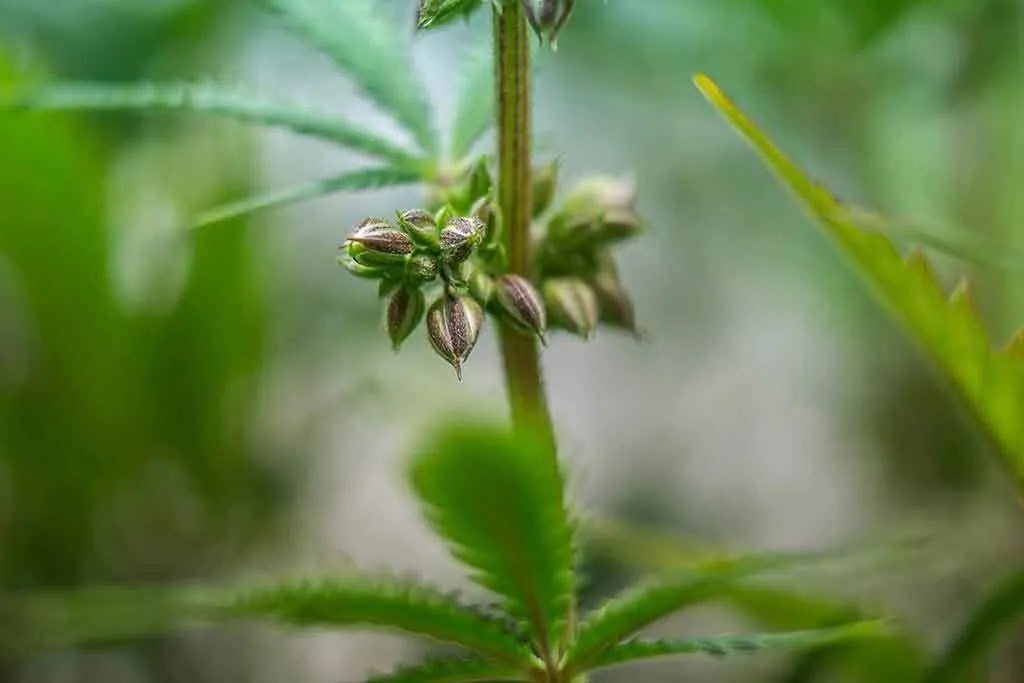
The most obvious reason for keeping male marijuana plants is that they are necessary for breeding. Once growers become more experienced and familiar with the process of growing, they often want to move on to breeding so they can create their very own strain. Just like in other parts of nature, in order to create a new genetic line, both males and females are needed and a strong male plant will help produce a strong line.
Perhaps a less obvious reason to keep male plants around is that they can be great for the garden. It’s been reported that for centuries farmers around the world have used male marijuana plants in their gardens for the terpenes they produce. These terpenes deter pests from invading vegetable crops, and when the leaves and flowers are dried, they can actually be sprayed onto other plants as a pest deterrent. Of course, male plants should never be used to deter pests, mould and other nuisances from female plants, as they would be too close to them, but they can be used effectively with other crops.
The stalks of male plants are also finer, yet stronger, than female plants, and this is useful when making hemp products. Because the fibers are finer, they produce softer material that can be used for clothing and linens. In Hungary, male marijuana plants are revered for their fibrous stalks.
Lastly, while it’s true that male marijuana plants will not produce buds, this doesn’t mean that they don’t contain any THC, as it was once believed. In fact, while male flowers will have significantly less THC than female flowers, the leaves of male plants have more THC than a female’s leaves.
#5 How to identify a female seed
For growers that don’t want to spend the time cloning plants or searching for signs of height, there may be ways to identify sex just from the seeds. While this is not a scientifically proven method and certainly isn't guaranteed, some growers swear by using this method to identify the sex of a seed before it is planted.
Sexing seeds is done during the germination stage, when the seed just begins to sprout. It’s thought that if the seed sprouts at the top or the bottom of the seed, the plant is likely a female. However, if the sprout appears at the side of the seed, the plant is most likely male. Again, this isn’t a full proof way of identifying the sex of a plant and I would not advise using this as the sole method of sexing marijuana plants, but it does again, give growers an idea of what plants need a special eye kept on them.
Sexing marijuana can often be a longer process than many growers are hoping for, but it’s a vitally important part of the job. When growers are looking for beautiful, potent buds, male and female plants simply cannot be grown near each other, so they need to be identified as early as possible.
By using the above 5 tips on how to spot the early signs of male a or female plant, you will greatly reduce the risk of having your crop ruined by a rogue male cannabis plant. Try out each method and let us know your thoughts below.
